Ternocon3 Exhibit Highlights the Balintawak
The Cultural Center of the Philippines, in partnership with Bench/Suyen Corporation, and Ayala Malls, presents “Ternocon3: Ang Balintawak Ngayon” exhibit featuring the terno/balintawak pieces created by the mentors and finalists from the third edition of Ternocon, slated on April 12 to 16, at various venues of the Ayala Malls. The exhibit is part of Ayala Malls’ Bravo Filipino program.
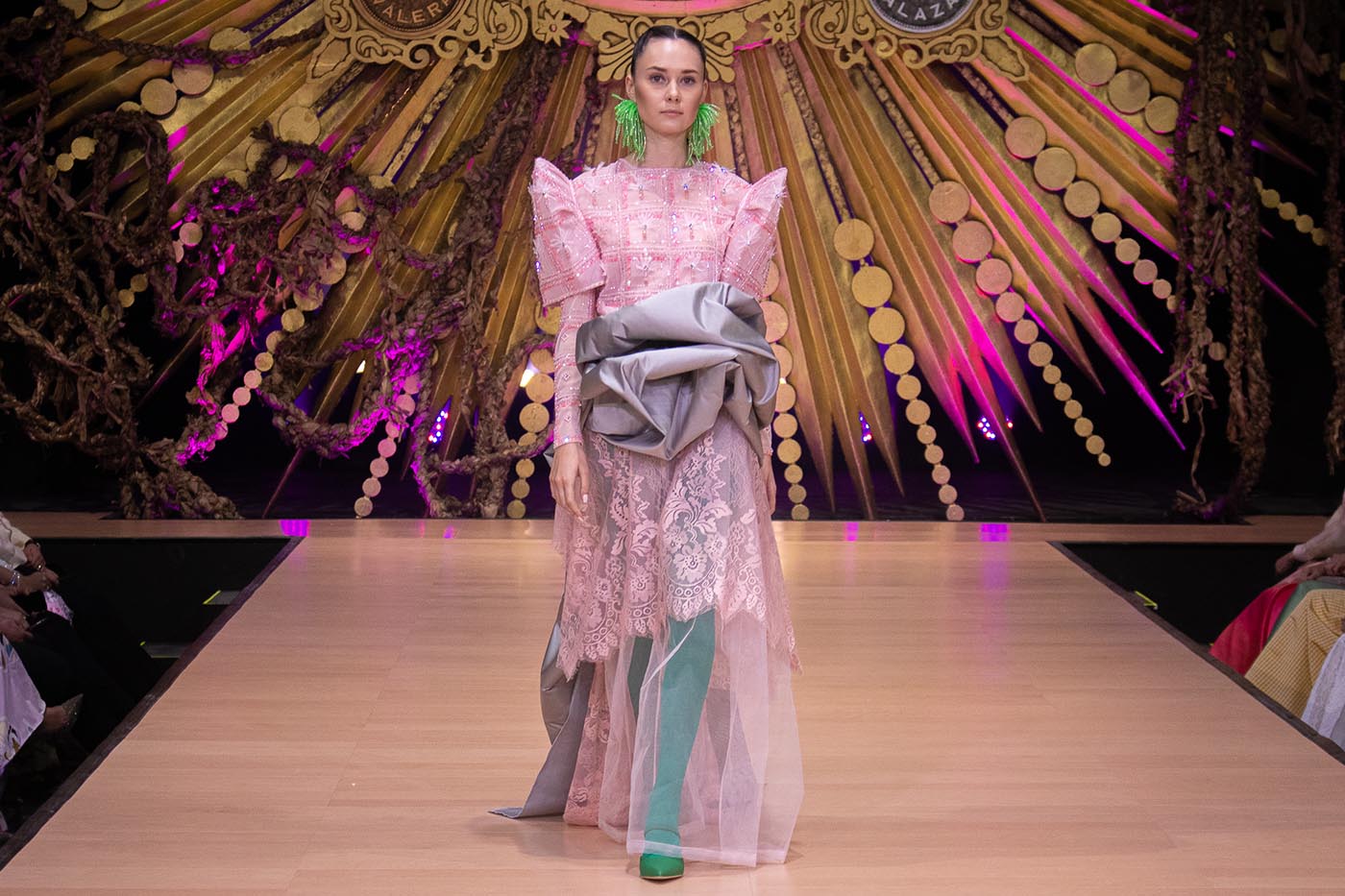
For this edition of the biennial terno-making convention and competition, the finalists were challenged to re-interpret the balintawak for Filipinos today and draw from its essence as a country attire.
Like other variations of terno, balintawak identifies with the butterfly sleeves. Typically used for town fiestas, pilgrimages, or excursions to the countryside, this type of terno is characterized by its alampay (a piece of cloth used as a head scarf, a kerchief folded as a triangle, or folded as a narrow rectangle resting on one shoulder) and the tapis (a strip of cloth wrapped around the waist).
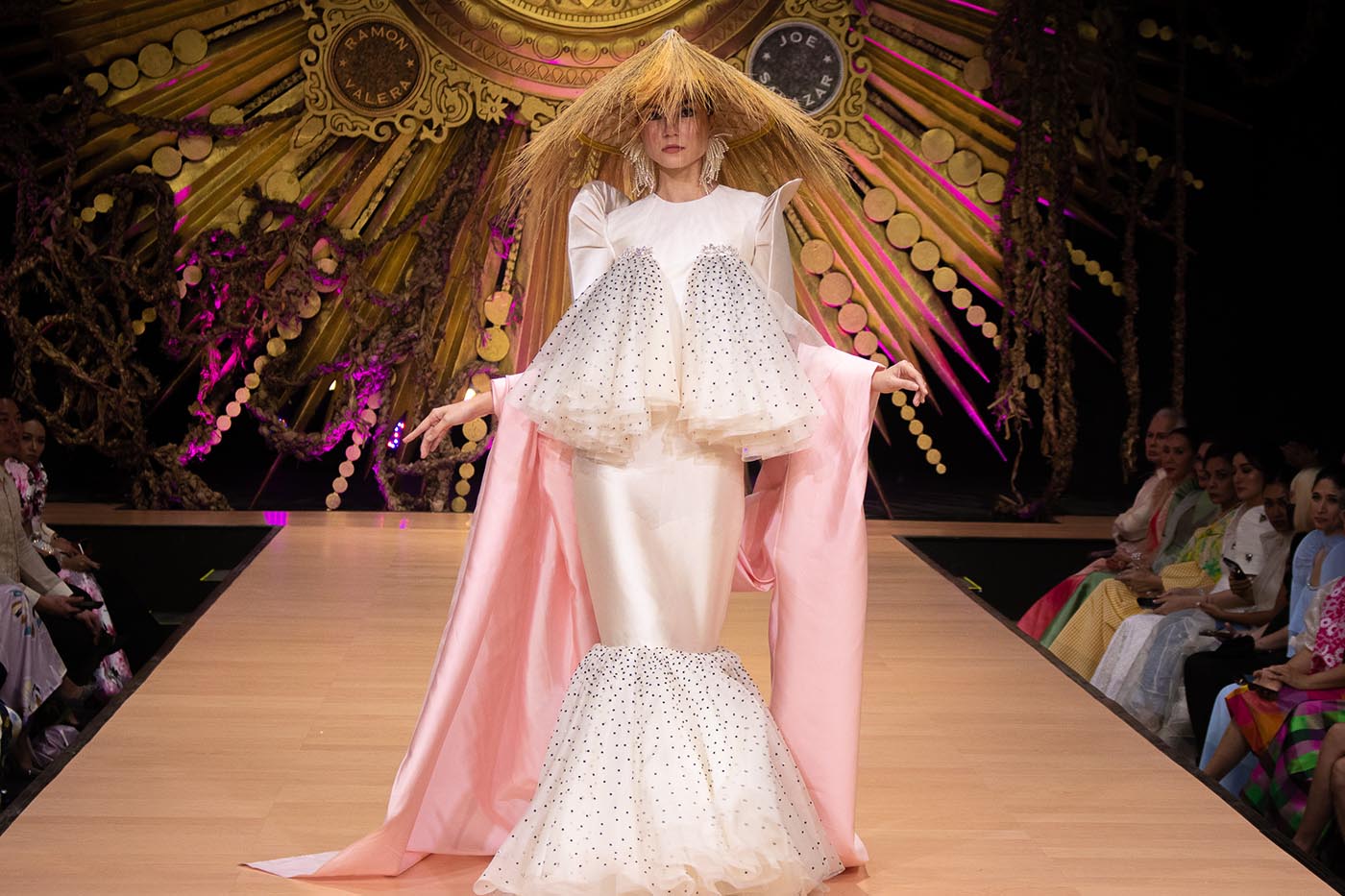
Traditional balintawaks were typically made from cañamazo (for the camisa/blouse) and printed cottons (for the alampay, tapis, and saya/skirt). Design motifs include stripes, plaid, flora, and whimsical imagery.
Curated by Ternocon Artistic Director Gino Gonzales, the exhibits will open simultaneously at the activity centers of Greenbelt 5, Glorietta 2, and Glorietta 4, as well as the lobby of Ayala Museum.

The exhibit at the Greenbelt 5 features works by Ternocon mentor Dennis Lustico, who worked with a sophisticated color palette executed in beaded piña cloth, point d’esprit, lace, fishnet, taffeta, duchesse satin, and silk organza. His pieces, inspired by a cluster of coconut trees that he had seen from one of his travels in the Philippines, feature long sleeves attached beneath the butterfly sleeves and traditional tapis stylized as draped forms and peplums in contrasting colors.
Mentors Inno Sotto and Joey Samson, with Ternocon 2020 winner Hannah Adrias, take the spotlight at the exhibit in Glorietta 2.

Two works by Sotto will be on display. One piece pays homage to National Artist Ramon Valera, with his modernist interpretation of the Philippine dress “which stood out from the rest of the clothes” for its contemporaneity made a lasting impression on the young Sotto in the 1960s. The other garment is Sotto’s own interpretation of the balintawak.
Samson’s Ang Mga Pag-ibig ni José Rizal drew inspiration from the real, fictional and metaphorical personae in the National Hero’s life. He fused the languages of traditional menswear with womenswear. The pañuelo was wrapped around the shoulders of a man, while the tapis became a natural extension of the barong. Conversely, tailoring techniques including the pintucking on men’s tuxedo shirts were exaggerated to create the voluminous bodices of two ternos for the finale.

Adrias’ collection, meanwhile, was fueled by a dystopian vision of fractured and distressed materials, with the alampay and tapis transformed into pointed or curvilinear strips that enveloped and revealed the body.
Balintawaks by the Ternocon 3 finalists will be on display at the Glorietta 4 Activity Center.
Joe Salazar Award (Chief Mentor’s Medal) winner Amor Albano elevated the appearance of an inexpensive textile, such as alampay with tiered layers or a trail of cut out flowers, and tapis with an exposed layering of textile, and effortless draping of the skirts.

Glyn Alley Magtibay used translucent X-ray sheets (instead of transparent cañamazo textile) to create the balintawak’s butterfly sleeves, bodice, corset, and other accessories. Bold orange and chartreuse textiles contrasted against the X-ray’s grayscale, resulting in contemporary interpretations of the balintawak for GenZ.
Bon Hansen Reyes used the language of menswear to interpret balintawak and evoke a genderless garment. The more structured suiting and shirting materials were combined with the softness of tulle and hand embroidery.
Pura Escurdia Award winner Gabbie Sarenas subtly tweaked the traditional balintawak to include dimensional embroidery of sampaguita flowers on the cañamazo (open mesh textile) and embroidered sketchy lines to simulate the bold stripes of the tapis, and exposed the traditional enaguas (petticoats).
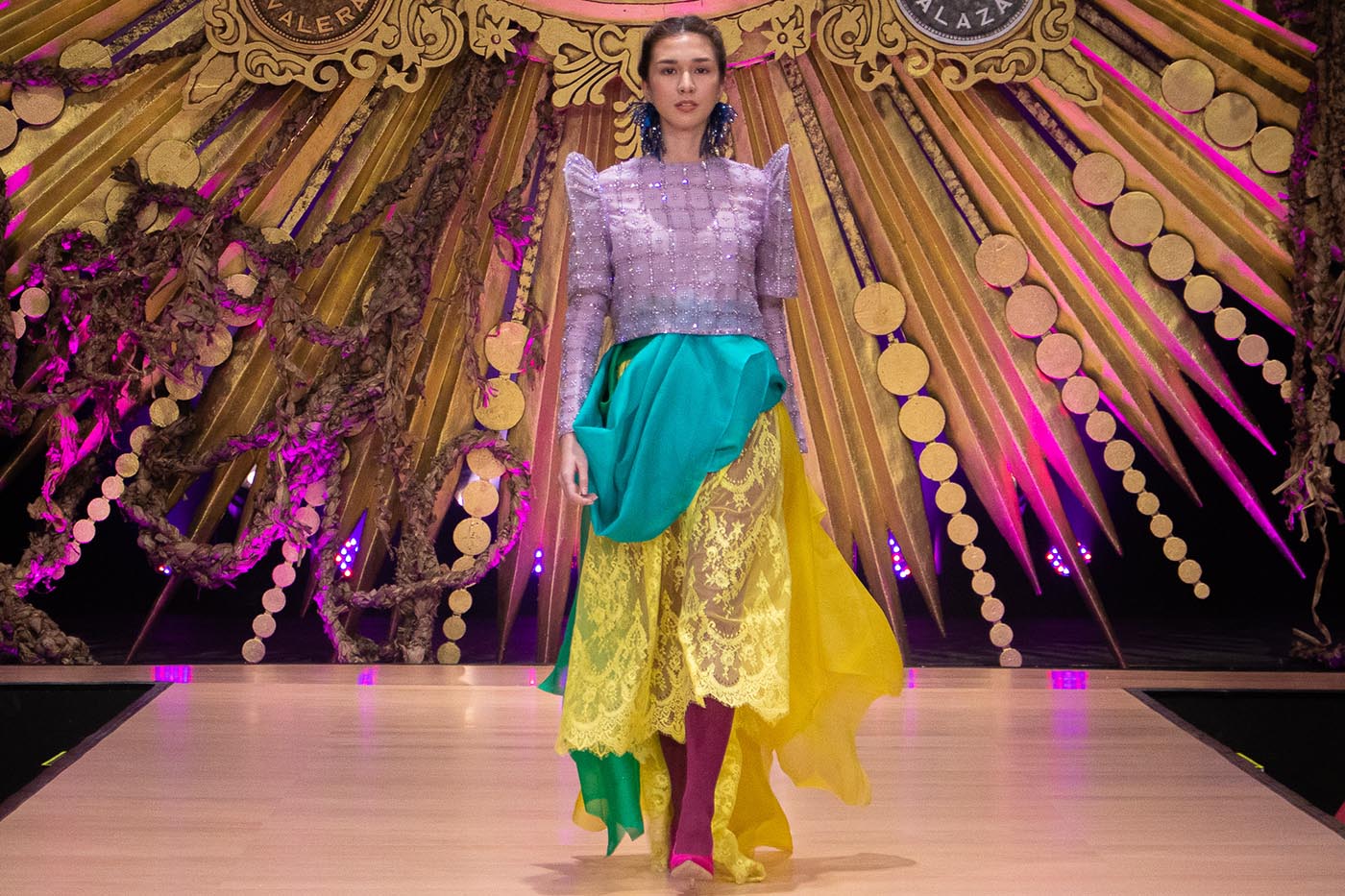
Bree Esplanada combined his graphic and fashion design skills to create ternos inspired by Philippine lore, with tikbalang and other mythological creatures printed, embroidered, beaded, and appliqued on the textile.
Inspired by buang (bag lady in buang in Kinaray-a), Karl Mark Nadales used deconstructed components and upcycled materials to suggest an assemblage of garments for his balintawak.
Al Rey Rosano captured the sunset of his hometown in Negros Oriental by recreating the yellow to orange ombré through meticulous micro pleating. Meanwhile, Ramon Valera Award (bronze medal) winner Glady Rose Pantua, celebrated the balintawak’s roots as country attire, which was embellished with home crafts.
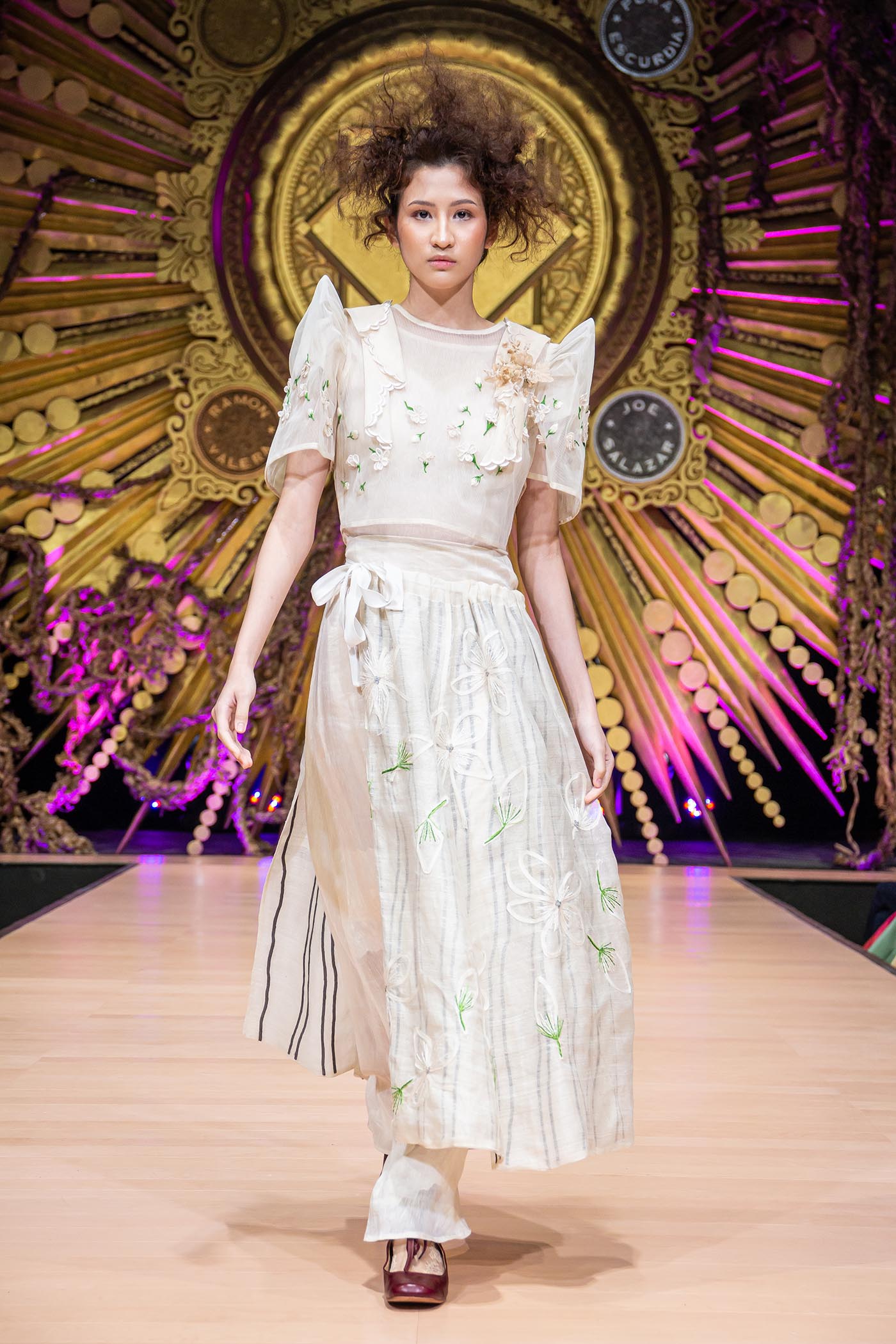
Marc Carcillar created an alampay that emerged from the skirt, went over a shoulder, and was fastened on the waist to resemble a draped tapis. An enormous pin was fashioned by a pukpok craftsman, and it pierced a butterfly sleeve together with the alampay. His other piece made use of a sheer, black overlay that suggested both the alampay and tapis. The bilao was repurposed as a hat.
Cheetah Rivera’s collection was inspired by two varieties of tropical butterflies, with the wings’ translucency and delicacy echoed by pleated organza, peplums suggesting the wind-blown tapis, and extended collars resembling layered ruffs alluded to the idea of terno sleeves as butterfly wings.
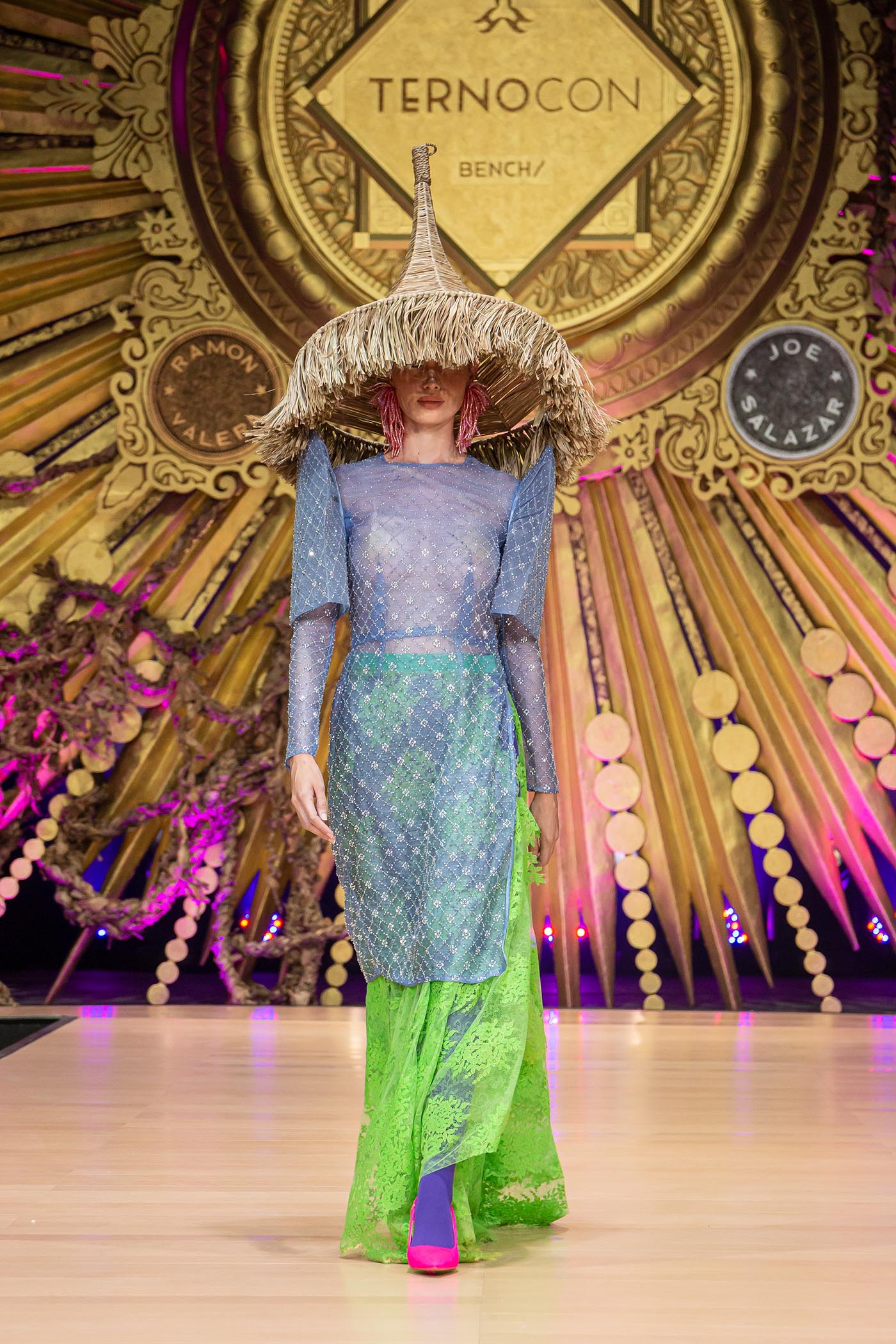
Dee Javier found inspiration with Francisco Balagtas’ Florante at Laura, with phrases rendered in caviar beads, a cowl suggested the alampay, and passages were rendered in ink on draped cloth that suggested a crumpled, tear-stained letter.
Geom Hernandez merged the alampay and tapis into an apron made of paneled, multi-colored tweed. His second outfit had a central portion of tie-dyed material that resembled a Rorschach pattern. It was flanked by adjustable panels with drawstrings – a practical device commonly found in traditional balintawak skirts.
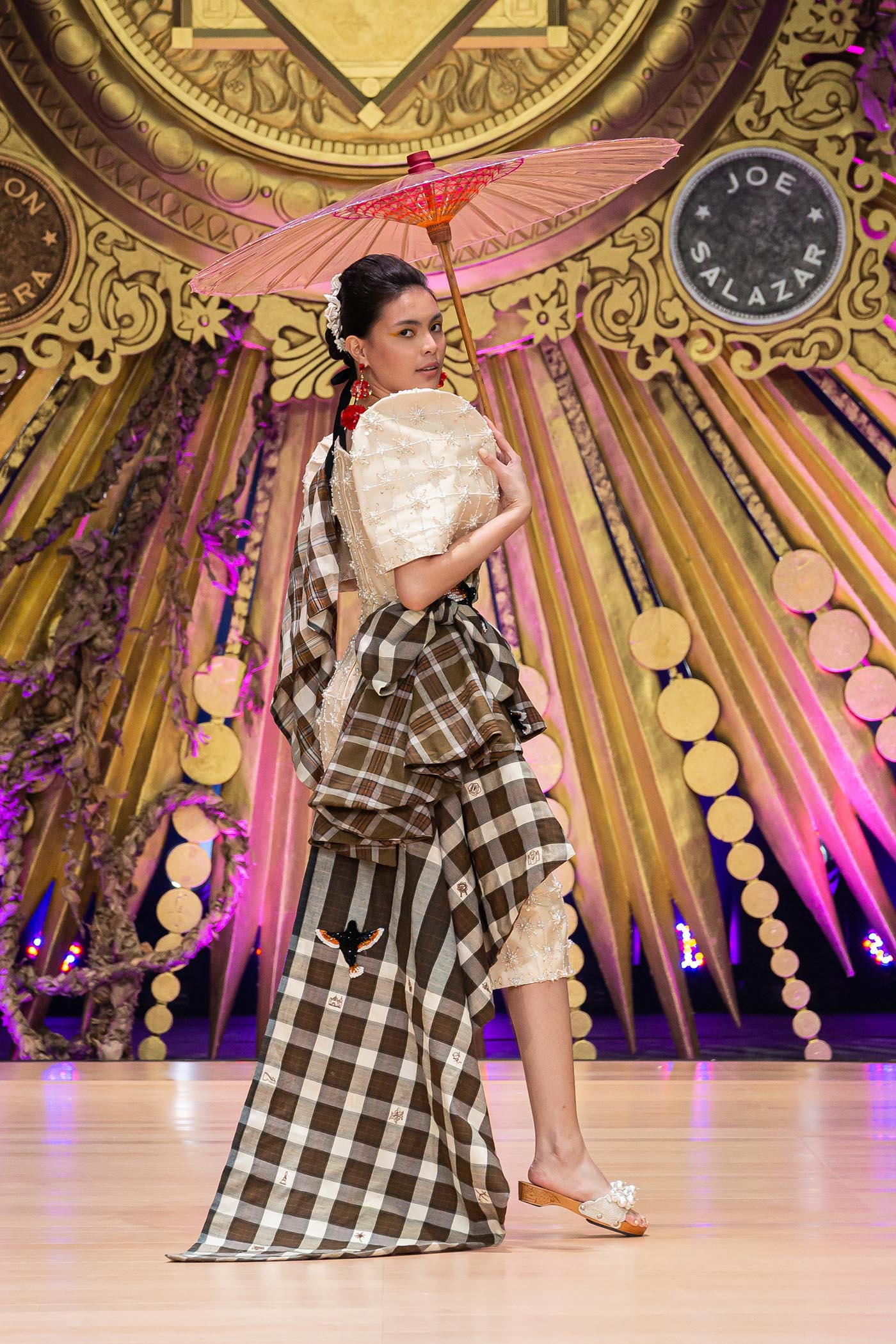
Pacita Longos Award (gold medal) winner Yssa Inumerable was inspired by images of the Gibson Girls from the turn of the 20th century, gently tweaking the traditional components, and inserting elements from traditional men’s dresses with its pleated pichera and embroidered collar.
On display at Ayala Museum Lobby, Ternocon3 mentors Chito Vijandre and Ricky Toledo produced three suites (Chulas, Dalagang Bukid, and Señoritas) that celebrated maximalism, multiculturalism, and camp. Beaded catchphrases from Bisaya, Tagalog slang, and English literature and images from Pinoy pop culture, and kitsch were merged with fine, vintage textiles, lacework, and classical imagery.
The meticulous assemblage and construction of the collection were done over a period of two years. The duo’s use of cross-references between historic iconography and popular culture mirrors the Philippine terno’s wide and evolving design vocabulary. The collection was presented at the Tanghalang Ignacio Gimenez of the CCP on January 28, 2023, to the tune of “jukebox” hits from the 1970s and 1980s. The exhibition music was from the Himig Collection of the Filipinas Heritage Library.
Visit the CCP website. Follow the official CCP social media accounts on Facebook, Twitter, Instagram, and Tiktok, as well as the social media accounts of Bench and Ayala Malls for the latest updates.

